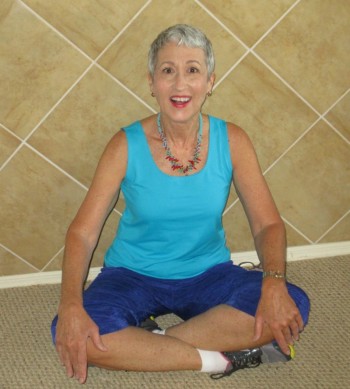A Language That Speaks to All Bodies
Jul 26, 2015

And now, a terrific guest post by Dagmar Munn....
If you’ve ever experienced the situation of trying to communicate with someone who doesn’t speak your language, you know that frustrated feeling: no matter how loud or slowly you pronounce your words - - they just don’t make sense to the other person. Finally, resorting to plain old body language you both hit an “ah-ha moment;” a signal of mutual understanding. From that point on, simple pantomime becomes your common language.
Common or universal languages are all around us. Pictogram signage in airports helps us navigate our way to public restrooms, departure gates and information desks. Those little icon symbols on our computers and hand-held devices are understood around the world. And I believe we can add one more valuable universal language to that list: the reset series developed by Original Strength. It’s a language that “speaks” to bodies needing rehabilitation, physical therapy or in my case - - a full system reboot! Let me explain.
I grew up in gymnastics, studied dance and pursued a career directing a hospital-based wellness center. My world was full of physical movement and teaching others how to move. So, it came as quite a shock in 2010, to be diagnosed with Amyotrophic Lateral Sclerosis (ALS, also known as Lou Gehrig’s disease). It’s a disease that robs the muscles of their motor neurons; the ones that help us talk, eat, breathe and move. The usual prognosis is total paralysis within 2-5 years and it is fatal. Within months of the diagnosis I began walking with a cane, by the end of the first year - - I needed a walker with wheels.
Medical experts still don’t know what causes motor neurons to deteriorate and unfortunately our bodies can’t generate or grow new ones. However, the experts do agree that exercise for people with ALS is beneficial. I researched the topic and learned that a growing number of studies show that exercise not only helps keep neurons plugged into muscles but helps to protect them from deterioration as well. Reading that gave me hope.
Sifting through my old notebooks containing variations of fitness routines from years past, I attempted modified versions of each. But to my dismay, even the simplest yoga poses and Pilates moves had become too “complicated” for my body to perform correctly. The messages being sent from my brain through the neurons and on down to my muscles had become garbled. On the return path, proprioceptors in my feet relayed completely inaccurate information. My sense of balance, spatial awareness and body control was out of whack! Even though my mind clearly remembered how to do a particular movement, my body regarded it as an alien command.
It wasn’t until further research brought me to Original Strength, that I had my own “ah-ha moment.” It happened as I crawled, rocked and rolled. Wobbling and lumbering along like an old circus elephant, I was humbled that a coordinated baby crawl required such concentration! Sure, I needed a rest break every 4-5 rocks, but everything I did felt good! Finally, I was moving, exerting energy, engaging my core and retraining my vestibular system, plus, no sore muscles. My brain and muscles were speaking a common language - - the one that (as Tim says) “is programmed, or hard-wired inside all of us.” As I practiced my series of movements I felt I was truly PRESSING RESET.
For a while, the resets were my entire workout. Eventually, I added the variations Tim demonstrates in his Movement Snacks videos. Now five years later, I’ve expanded my daily workout from one twenty-minute session to several per day. This year, I’ve added in a yoga downward facing dog pose, planks and modified push-ups. My version of “dead bug” used to be in a loose tuck position, now I’m extending arms and legs right up to the ceiling. I could go on and on, but suffice to say I’ve actually had improvement! Something not lost on my neurologist and physical therapists at the MDA-ALS Clinic that I attend every three months. “Whatever you’re doing, keep doing it!” they’d exclaim following the functional strength tests they administered. So far, my muscle strength is holding steady and in some areas - - has actually improved. My neurologist agreed that the cross-lateral movements and rolling were stimulating my vestibular system and added, “Those range-of-motion movements are keeping your tendons stretched and helping prevent the muscle tightness associated with ALS.”
Obviously, I am not looking for a miracle cure - - I am a realist. I only want to feel better, feel in control and keep my body healthy. I may never be able do the Spider-man crawl and when I walk, I still need to use a walker. But that’s OK, because five years later, I’m still here - - and I’m moving!
Thank you Tim and Geoff for Original Strength; it’s a wonderful movement system that has made a positive impact on my health!
# # #
If you, or someone you know has ALS, or any other life-threatening illness Dagmar’s book, Align, Lengthen & Strengthen Your Resilience; While Living with ALS is a recommended read. It’s available as a free download from www.alsandwellness.blogspot.com Drawing from her background in wellness, Dagmar shares personal and humorous anecdotes on creating a resilient life.
Comments (0)
Please login to comment.